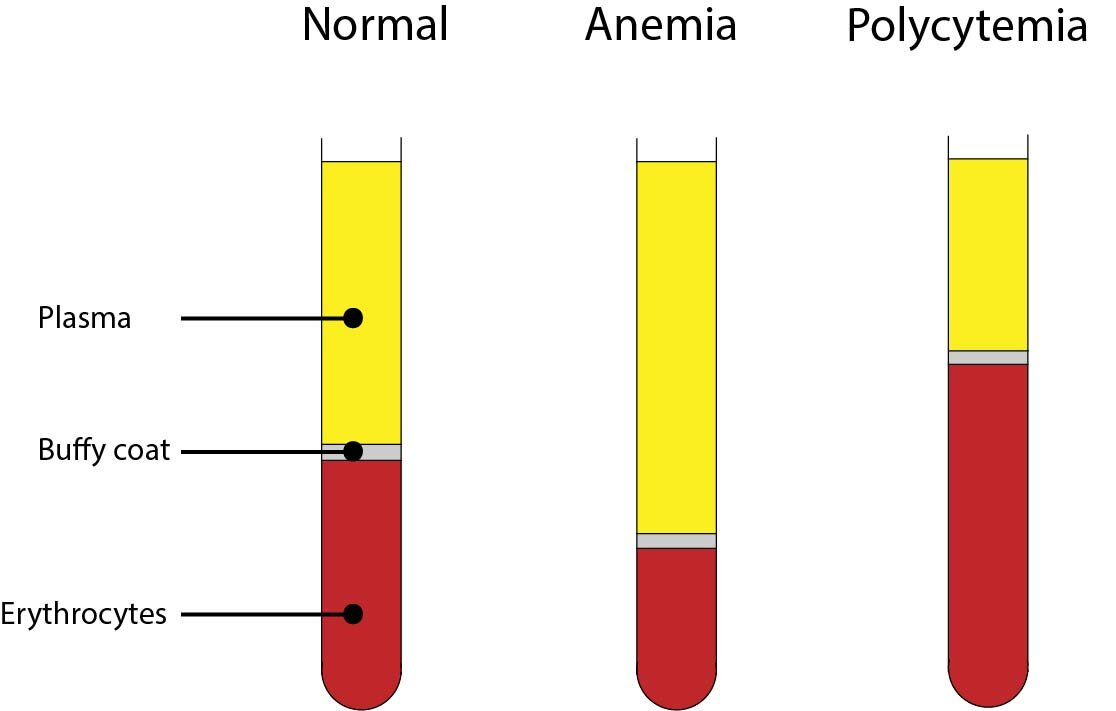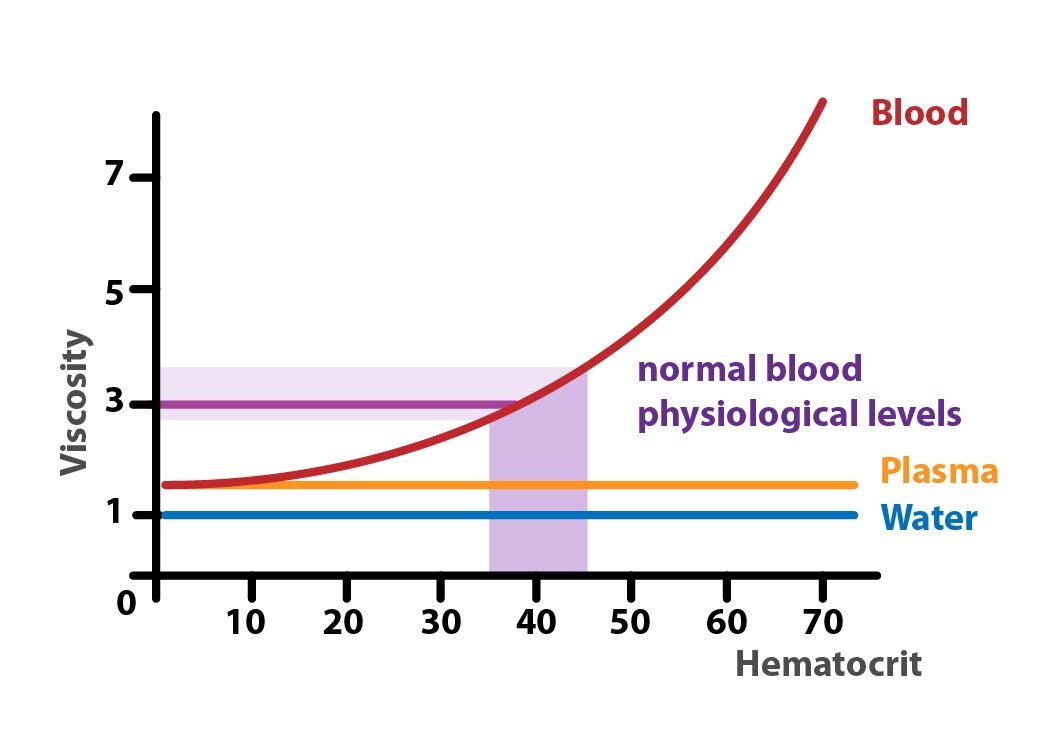Content:
1. Composition of blood and its functions
_
Composition of blood and its functions
Blood is a suspension of blood elements (erythrocytes, leukocytes, and platelets) in blood plasma. Blood elements can be separated from blood plasma using centrifugal force. Figure shows that the most descended are erythrocytes – the volume of erythrocytes in a sample of blood is called the hematocrit. Hematocrit values differ depending on sex – in men the values range about 44 ± 5 % of blood volume and in women about 39 ± 4 % of blood volume. Above the erythrocyte layer is found the white non-transparent layer composed of leukocytes and thrombocytes. This layer is called buffy coat (forms about 1 % of blood volume).
In our blood vessels circulate about 4.5-6 l of blood, which represents approximately 6-9% of body weight. Women have less blood than men. Blood plasma, making up the liquid portion of blood, is a colloid solution of organic and inorganic substances (electrolytes, nutrients, proteins, hormones etc.) with an addition of dissolved blood gases. It is slightly opalescent and its pale yellowish colour is caused by the presence of pigments, formed by decay of erythrocytes. Volume of blood plasma is approximately 2.8-3.5 l (40-45 ml/kg of b.w.). Together with the lymph, it makes up to 25 % of extracellular fluid (ECF).
Basic functions of blood include:
1) Transport of nutrients, waste products, blood gases (oxygen and carbon dioxide) or signaling molecules
2) Immune function
3) To maintain homeostasis of water, ions or pH
4) Distribution of heat throughout the body
5) Blood clotting
Viscosity of the blood
Viscosity is a value that characterizes an internal friction of a fluid. It primarily depends on the attractive forces between particles. Under physiological conditions, the viscosity of the blood of about three fold higher than the viscosity of water. Viscosity of blood is directly related to the number of red blood cells (hematocrit).
For more detailed information about the composition and functions of blood see following sections of this chapter.
Subchapter Authors: Patrik Maďa and Josef Fontana


